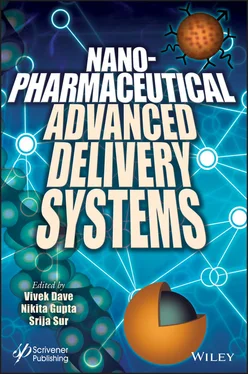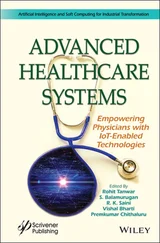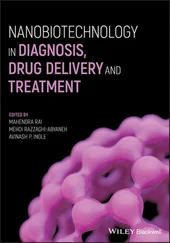139. Barba, A.A., Bochicchio, S., Dalmoro, A., Lamberti, G., Lipid delivery systems for nucleic-acid-based-drugs: From production to clinical applications. Pharmaceutics , 11, E360, 2019.
140. Tabernero, J., Shapiro, G.I., LoRusso, P.M., Cervantes, A., Schwartz, G.K., Weiss, G.J. et al. , First-in-humans trial of an RNA interference therapeutic targeting VEGF and KSP in cancer patients with liver involvement. Cancer Discov. , 3, 406–417, 2013.
141. Jayaraman, M., Ansell, S.M., Mui, B.L., Tam, Y.K., Chen, J., Du, X. et al. , Maximizing the Potency of siRNA Lipid Nanoparticles for Hepatic Gene Silencing In Vivo . Angew. Chem. , 124, 8657–8661, 2012.
142. Coelho, T., Adams, D., Silva, A., Lozeron, P., Hawkins, P.N., Mant, T. et al. , Safety and efficacy of RNAi therapy for transthyretin amyloidosis. N. Engl. J. Med. , 369, 819–829, 2013.
143. Frank-Kamenetsky, M., Grefhorst, A., Anderson, N.N., Racie, T.S., Bramlage, B., Akinc, A. et al. , Therapeutic RNAi targeting PCSK9 acutely lowers plasma cholesterol in rodents and LDL cholesterol in nonhuman primates. Proc. Natl. Acad. Sci. USA , 105, 11915–11920, 2008.
144. Tolcher, A.W., Papadopoulos, K.P., Patnaik, A., Rasco, D.W., Martinez, D., Wood, D.L. et al. , Safety and activity of DCR-MYC, a first-in-class Dicer-substrate small interfering RNA (DsiRNA) targeting MYC, in a phase I study in patients with advanced solid tumors. J. Clin. Oncol. , 33, 11006–11006, 2015.
145. Flisiak, R., Jaroszewicz, J., Łucejko, M., siRNA drug development against hepatitis B virus infection. Expert Opin. Biol. Ther. , 18, 609–617, 2018.
146. Haque, A., Hober, D., Blondiaux, J., Addressing therapeutic options for Ebola virus infection in current and future outbreaks. Antimicrob. Agents Chemother. , 59, 5892–8902, 2015.
147. Landen, C.N., Chavez-Reyes, A., Bucana, C., Schmandt, R., Deavers, M.T., Lopez-Berestein, G. et al. , Therapeutic EphA2 gene targeting in vivo using neutral liposomal small interfering RNA delivery. Cancer Res. , 65, 6910–6918, 2005.
148. Niu, Z., Conejos-Sánchez, I., Griffin, B.T., O’Driscoll., C.M., Alonso, M.J., Lipid-based nanocarriers for oral peptide delivery. Adv. Drug Deliv. Rev. , 106, 337–354, 2016.
149. Sarmento, B., Martins, S., Ferreira, D., Souto, E.B., Oral insulin delivery by means of solid lipid nanoparticles. Int. J. Nanomedicine , 2, 743–749, 2007.
150. Fan, T., Chen, C., Guo, H., Xu, J., Zhang, J., Zhu, X. et al. , Design and evaluation of solid lipid nanoparticles modified with peptide ligand for oral delivery of protein drugs. Eur. J. Pharm. Biopharm. , 88, 518–528, 2014.
151. Hu, F.Q., Hong, Y., Yuan, H., Preparation and characterization of solid lipid nanoparticles containing peptide. Int. J. Pharm. , 273, 29–35, 2004.
152. Yang, R., Gao, R., Li, F., He, H., Tang, X., The influence of lipid characteristics on the formation, in vitro release, and in vivo absorption of protein-loaded SLN prepared by the double emulsion process. Drug Dev. Ind. Pharm. , 37, 139–148, 2011.
153. Yuan, H., Jiang, S.P., Du, Y.Z., Miao, J., Zhang, X.G., Hu, F.Q., Strategic approaches for improving entrapment of hydrophilic peptide drugs by lipid nanoparticles. Colloids Surf. B Biointerfaces , 70, 248–253, 2009.
154. Kashanian, S. and Rostami, E., PEG-stearate coated solid lipid nanoparticles as levothyroxine carriers for oral administration. J. Nanopart. Res. , 16, 2293, 2014.
155. Christophersen, P.C., Zhang, L., Yang, M., Nielsen, H.M., Müllertz, A., Mu, H., Solid lipid particles for oral delivery of peptide and protein drugs I—Elucidating the release mechanism of lysozyme during lipolysis. Eur. J. Pharm. Biopharm. , 85, 473–480, 2013.
156. Bakala-N’Goma, J.C., Williams, H.D., Sassene, P.J., Kleberg, K., Calderone, M., Jannin, V. et al. , Toward the establishment of standardized in vitro tests for lipid-based formulations. 5. lipolysis of representative formulations by gastric lipase. Pharm. Res. , 32, 4, 1279–1287, 2015.
157. Kisel, M.A., Kulik, L.N., Tsybovsky, I.S., Vlasov, A.P., Vorob’yov, M.S., Kholodova, E.A. et al. , Liposomes with phosphatidylethanol as a carrier for oral delivery of insulin: Studies in the rat. Int. J. Pharm. , 216, 105–114, 2001.
158. Thirawong, N., Thongborisute, J., Takeuchi, H., Sriamornsak, P., Improved intestinal absorption of calcitonin by mucoadhesive delivery of novel pectin-liposome nanocomplexes. J. Control. Release , 125, 236–245, 2008.
159. Kowapradit, J., Apirakaramwong, A., Ngawhirunpat, T., Rojanarata, T., Sajomsang, W., Opanasopit, P., Methylated N-(4-N,N-dimethylaminobenzyl) chitosan coated liposomes for oral protein drug delivery. Eur. J. Pharm. Sci. , 47, 359–366, 2012.
160. Carafa, M., Marianecci, C., Annibaldi, V., Di Stefano, A., Sozio, P., Santucci, E., Novel O-palmitoylscleroglucan-coated liposomes as drug carriers: Development, characterization and interaction with leuprolide. Int. J. Pharm. , 325, 155–162, 2006.
161. Li, H., Jun, H.A., Park, J.S., Han, K., Multivesicular liposomes for oral delivery of recombinant human epidermal growth factor. Arch. Pharm. Res. , 28, 988–994, 2005.
162. Parmentier, J., Thewes, B., Gropp, F., Fricker, G., Oral peptide delivery by tetraether lipid liposomes. Int. J. Pharm. , 415, 150–157, 2011.
163. Tan, M.L., Choong, P.F.M., Dass, C.R., Recent developments in liposomes, microparticles and nanoparticles for protein and peptide drug delivery. Peptides , 31, 184–193, 2010.
164. Sun, H., Liu, K., Liu, W., Wang, W., Guo, C., Tang, B. et al. , Development and characterization of a novel nanoemulsion drug-delivery system for potential application in oral delivery of protein drugs. Int. J. Nanomedicine , 7, 5529–5543, 2012.
165. Trenktrog, T. and Müller, B.W., Preparation and characterization of a peptide containing w/o emulsion. Int. J. Pharm. , 123, 199–207, 1995.
1 * Corresponding author: vikasjain@jssuni.edu.in
2
Nanoparticulate Carriers— Versatile Delivery Systems
Ruchi Chawla*, Varsha Rani and Mohini Mishra
Department of Pharmaceutical Engineering & Technology, Indian Institute of Technology (Banaras Hindu University), Varanasi, India
Abstract
Recently, significant efforts have been made on the development of biocompatible and biodegradable nanoparticulate carrier systems like polymeric nanoparticles, solid lipid nanoparticles, liposomes, etc. for delivery of drugs because of their potential benefits such as enhanced drug permeability, cell adhesion, cytotoxicity and cell attachment, improved bioavailability, reduced systemic toxicity, reduced local irritation, predictable gastric emptying, and improved pharmacokinetic behavior in comparison to conventional (monolithic) formulations. The sub-cellular and sub-micron size of nanoparticles facilitates trafficking and sorting into deep tissues through capillaries or fenestrations and also into different intracellular compartments such as macrophages, dendritic cells, etc.
The delivery to target site and tissues can be controlled by engineering the polymer/lipid characteristics for their molecular weight, size, aqueous solubility, etc. The nanoparticulate carriers can be targeted both actively and passively. Conjugation with receptor-specific ligands results in active targeting with potential delivery of drugs to the target tissue. Autophagy is an example of passive targeting mechanism in which circulating cytoplasmic cells or organelles engulf the drug carriers (like in tuberculosis). Besides use of nanocarriers for delivery of drugs, they can also be used for delivery of DNA in gene therapy and administer proteins, peptides, and genes via peroral route. Thus, the nanoparticulate drug carriers have versatile applications in drug delivery and treatment of diseases.
Читать дальше












